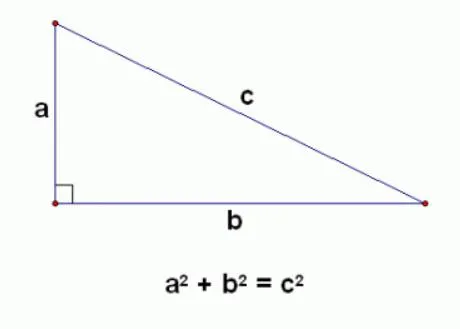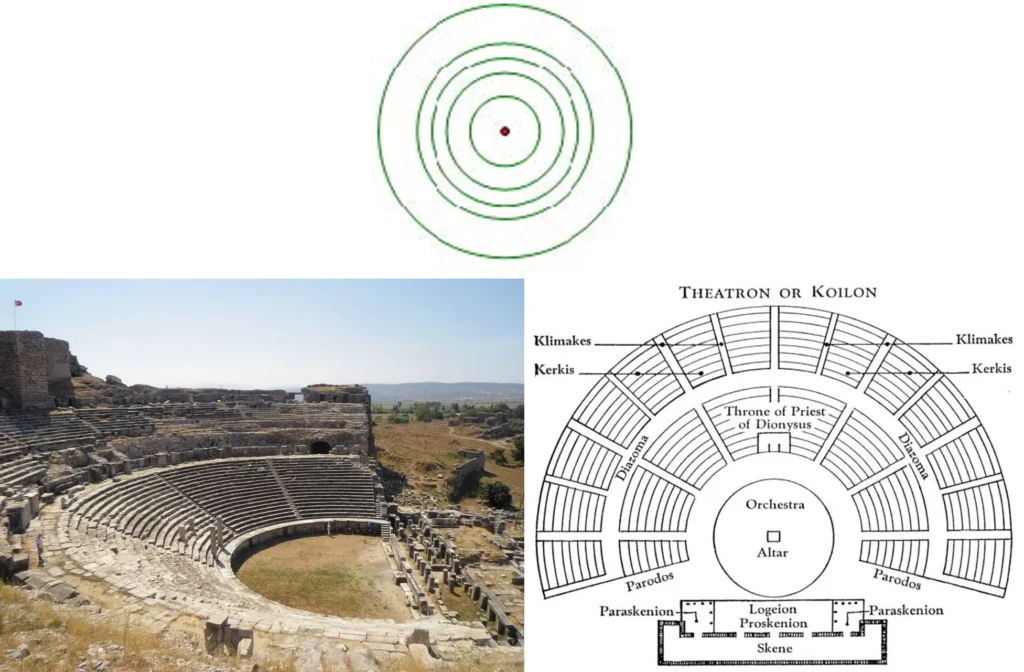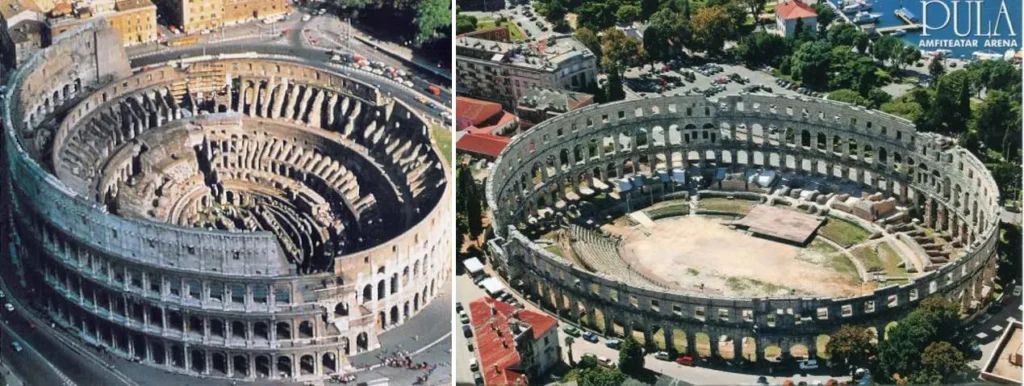If you want to know about the scale in architecture or form in architecture or proportion in architecture, please click the link.
Geometry is a fundamental aspect of architecture and is used to create aesthetically pleasing designs, plan functional spaces, and ensure structural stability. It involves the use of mathematical concepts like points, lines, angles, and shapes to create architectural forms.
Geometric shapes, such as circles, squares, triangles, and polyghedrons, are often used as building blocks for architectural design and construction. In architecture, geometry is used to determine the proportions of a building, to create symmetrical and asymmetrical forms, and to plan spatial arrangements and circulation patterns.
- Geometry is a branch of mathematics concerned with questions of shape, size, relative position of figures, and the properties of space. Geometry can be seen also as a structural science.
- Architectural design is based on geometric structures developed out of the idea of transformations. These transformations are visible as design concepts through history of architecture.
“For without symmetry and proportion no temple can have a regular plan”.
Vitruvius (De Architectura, or Ten Books on Architecture)
In “De Architectura,” Vitruvius discussed the use of geometry in architecture, describing how the principles of mathematics were used to create well-proportioned and aesthetically pleasing buildings. He also described the use of modular systems, symmetry, and other geometric concepts in architectural design.
Today, “De Architectura” is still widely read and respected as a source of historical and architectural information. It continues to influence architects and designers, who continue to draw inspiration from its timeless insights and principles.

1) Important concepts in geometry
The following are some of the important concepts in geometry relevant to architecture:
- Points: the most basic element in geometry, representing a location in space.
- Lines: a series of connected points, forming a path between two points.
- Angles: the measure of the separation between two lines that share a common endpoint.
- Shapes: two-dimensional forms created by the combination of lines, including squares, rectangles, triangles, circles, and polyggons.
- Solids: three-dimensional objects created by the combination of shapes, including cubes, cylinders, cones, and spheres.
- Proportions: the relationship between the size of one part of an object and the size of another part or the whole object.
- Symmetry: the balance and consistency of design elements on either side of an axis.
- Tessellation: the arrangement of shapes in a repeated pattern to cover a surface.
- Perspective: the use of optical illusion to create the illusion of depth and space on a two-dimensional surface.
- Modular systems: a method of creating proportion and rhythm in architectural design by dividing a space or form into repeating units.
These concepts are used by architects and engineers to create aesthetically pleasing, functional, and safe buildings.
2) Geometry uses in architecture
- Another way architects use geometry is by certain shapes of buildings. Architects must know the perimeter and area of the shapes to create the building.
- Another way architects use geometry is by using the Pythagorean Theorem for the design and measurements of building structures.

3) Why geometry in architecture?
- Architecture begins with geometry. Since earliest times, architects have relied on mathematical principles.

i) Ancient civilizations

Greece

Greek theatre

Rome
- The Colosseum, the most important roman amphitheater, was used for gladiatorial contests and public spectacles such as mock sea battles.


Taj Mahal, mausoleum, India, reflection symmetry

Versailles, symbol of the system of absolute monarchy of the Ancien Régime
Polygons

ii) Some modern building….
Here are a few examples of modern buildings that use geometry in their design:
- Burj Khalifa, Dubai: The world’s tallest building features a sleek, triangular shape that narrows as it rises, creating a distinct geometric form that is visible from a distance.
- Guggenheim Museum, Bilbao: The building’s distinctive, flowing form was created using a complex system of geometric shapes, including spirals and curves, to create a fluid, organic feel.
- CCTV Headquarters, Beijing: This iconic building features a looping, geometric form that resembles a twisted, rectangular tube, creating a highly recognizable and distinctive silhouette.
- Sydney Opera House, Sydney: The building’s iconic sails are created using a series of interconnected shells that are precisely modeled using geometric principles, creating a harmonious and recognizable form.
- Petronas Towers, Kuala Lumpur: The twin towers feature a distinctive geometric form that resembles two interlocking squares, creating a recognizable and iconic silhouette.
These are just a few examples of how geometry is used in modern architecture to create aesthetically pleasing and functional buildings.

In summary, geometry is an essential tool in architecture, providing a way to create aesthetically pleasing, functional, and safe buildings that reflect the goals and values of their designers.
If you want to know also about the elements of design or objective of design or origin of architecture or principles of design, please click the link.